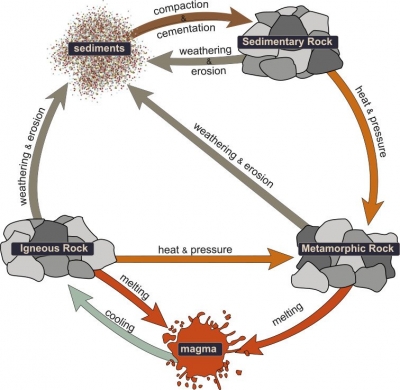HOW ARE ICEBERGS FORMED?

Icebergs are formed from freshwater ice brought to the sea by glaciers, or when chunks are broken off an ice cap due to the effect of the tide and waves. This effect is known as calving. Icebergs contain large amounts of rock fragments that make them heavy, and they sit low in the sea. Once an iceberg has broken off, its movement depends upon the wind and sea currents.
Iceberg, floating mass of freshwater ice that has broken from the seaward end of either a glacier or an ice shelf. Icebergs are found in the oceans surrounding Antarctica, in the seas of the Arctic and subarctic, in Arctic fjords, and in lakes fed by glaciers.
Icebergs of the Antarctic calve from floating ice shelves and are a magnificent sight, forming huge, flat “tabular” structures. A typical newly calved iceberg of this type has a diameter that ranges from several kilometres to tens of kilometres, a thickness of 200–400 metres (660–1,320 feet), and a freeboard, or the height of the “berg” above the waterline, of 30–50 metres (100–160 feet). The mass of a tabular iceberg is typically several billion tons. Floating ice shelves are a continuation of the flowing mass of ice that makes up the continental ice sheet. Floating ice shelves fringe about 30 percent of Antarctica’s coastline, and the transition area where floating ice meets ice that sits directly on bedrock is known as the grounding line. Under the pressure of the ice flowing outward from the centre of the continent, the ice in these shelves moves seaward at 0.3–2.6 km (0.2–1.6 miles) per year. The exposed seaward front of the ice shelf experiences stresses from subshelf currents, tides, and ocean swell in the summer and moving pack ice during the winter. Since the shelf normally possesses cracks and crevasses, it will eventually fracture to yield freely floating icebergs. Some minor ice shelves generate large iceberg volumes because of their rapid velocity; the small Amery Ice Shelf, for instance, produces 31 cubic km (about 7 cubic miles) of icebergs per year as it drains about 12 percent of the east Antarctic Ice Sheet.
Most Arctic icebergs originate from the fast-flowing glaciers that descend from the Greenland Ice Sheet. Many glaciers are funneled through gaps in the chain of coastal mountains. The irregularity of the bedrock and valley wall topography both slows and accelerates the progress of glaciers. These stresses cause crevasses to form, which are then incorporated into the structure of the icebergs. Arctic bergs tend to be smaller and more randomly shaped than Antarctic bergs and also contain inherent planes of weakness, which can easily lead to further fracturing. If their draft exceeds the water depth of the submerged sill at the mouth of the fjord, newly calved bergs may stay trapped for long periods in their fjords of origin. Such an iceberg will change shape, especially in summer as the water in the fjord warms, through the action of differential melt rates occurring at different depths. Such variations in melting can affect iceberg stability and cause the berg to capsize. Examining the profiles of capsized bergs can help researchers detect the variation of summer temperature occurring at different depths within the fjord. In addition, the upper surfaces of capsized bergs may be covered by small scalloped indentations that are by-products of small convection cells that form when ice melts at the ice-water interface.
Picture Credit : Google













